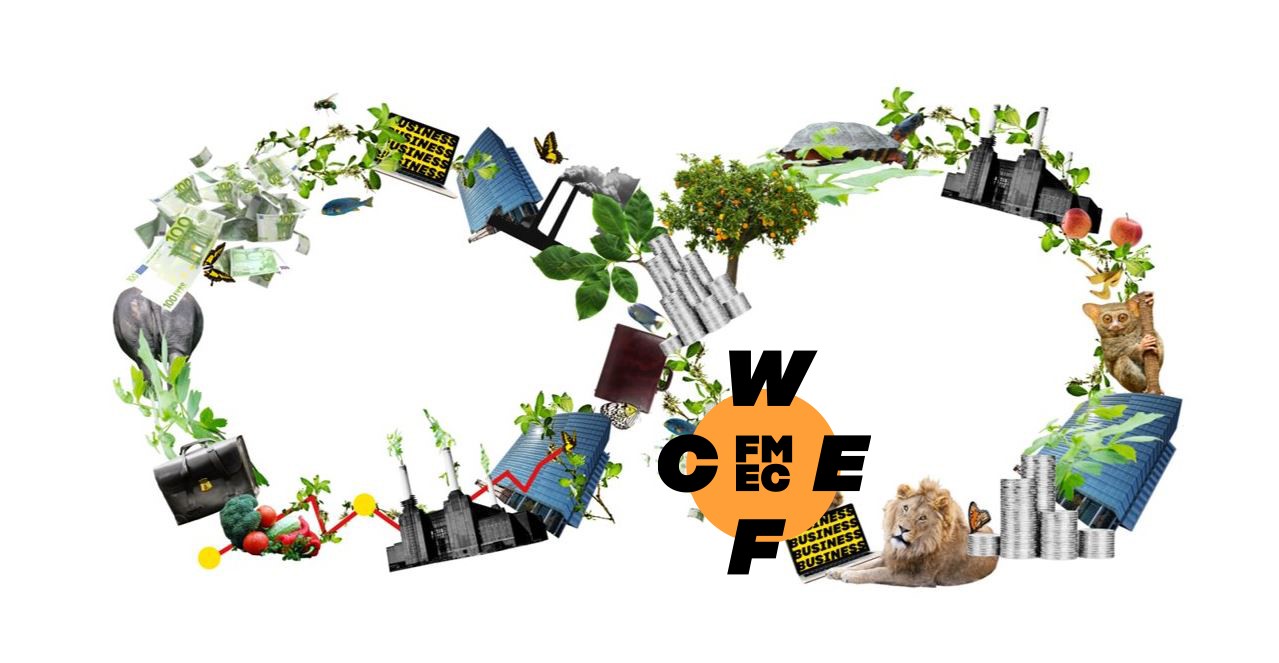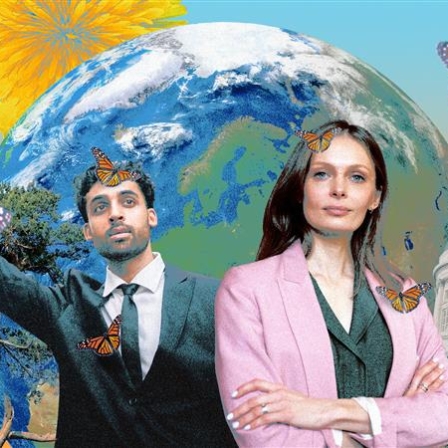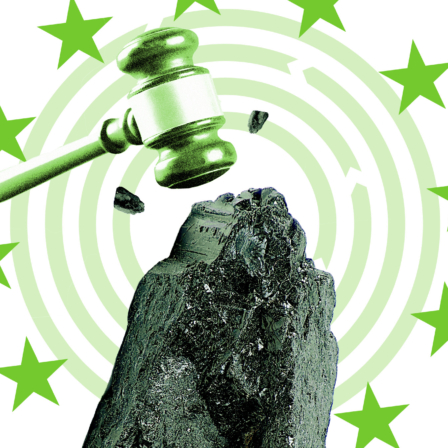Biodiversity loss has quickly manifested itself as an urgent challenge parallel to the climate crisis. The circular economy The circular economy An economic model which does not focus on producing more and more goods, but in which consumption is based on using services – sharing, renting and recycling – instead of owning. Materials are not destroyed in the end, but are used to make new products over and over again. Open term page The circular economy is a key tool for tackling biodiversity loss. The circular economy provides concrete opportunities for businesses to tackle this challenge, while managing business risks and unlocking new economic opportunities. Circular business models can do this by maintaining the value of materials and rethinking how we produce, consume and manage natural resources, which reduces pressure on biodiversity.
The Finnish Innovation Fund Sitra and the Ellen MacArthur Foundation co-organised the event Biodiversity as a circular business opportunity – WCEF2021 Accelerator Session at the World Circular Economy Forum 2021. The session focused on the interlinkages between circular business opportunities and biodiversity, framed around recent research findings which present viable circular business cases. The session also explored the important enabling role of finance, data and measurements for biodiversity.
Watch session on Youtube:
Circularity bends the curve on biodiversity loss
According to International Resource Panel, 90 per cent of global biodiversity loss and water stress are caused by the extraction and processing of natural resources. Alongside conservation and restoration efforts, a comprehensive economic transformation to production and consumption systems is needed to turn the tide on biodiversity loss.
Akanksha Khatri, Head of Nature and Biodiversity at the World Economic Forum, highlighted the need for a transition toward a nature-positive economic model to bend the curve on biodiversity loss. Economic growth should not be tied directly to resource extraction. The economic activities should rather increase, enhance and regenerate natural resources and nature.
“The world’s resource extraction has tripled within the past 20 years, yet 800 million people lack electricity around the world,” Khatri pointed out.
Recent studies fill the gap between the circular economy and biodiversity
Compered to climate change mitigation, much less is known about the ability of circular solutions to tackle biodiversity loss. However, evidence-based models are increasingly used to understand how businesses, governments and citizens could use circular economy approaches to help solve biodiversity loss.
Two recent studies, by the Ellen MacArthur Foundation, and Sitra and Vivid Economics, examine the potential of circular economy to tackle biodiversity loss.
According to the study by the Ellen MacArthur Foundation, the circular economy could tackle biodiversity loss by eliminating waste and pollution to reduce threats to biodiversity, circulating products and materials to leave room for biodiversity, and regenerating nature to enable biodiversity to thrive.
Soukeyna Gueye, Project Manager from the Ellen MacArthur Foundation, recommended businesses assess their impact and dependency on biodiversity, set science-based targets on biodiversity, identify circular economy opportunities to meet the targets, and collaborate across sectors and supply chains.
The production and consumption mismatch creates opportunities to reduce biodiversity loss
The agriculture and food sector is one of the biggest drivers of biodiversity loss. The expansion of agricultural land creates major pressures on biodiversity. Globally, almost two-thirds of species are threatened by agriculture and aquaculture (such as fish farming), and more than one-third of food is wasted.
Ashley Gorst, Engagement Manager from Vivid Economics, presented the initial results of a study examining the role of circular economy in tackling global biodiversity loss. The study focuses on the four sectors that have the largest impact on global biodiversity and are most relevant to the circular economy. The preliminary results suggest that circular economy actions in the food and agriculture sector alone could halt and reverse much of global biodiversity loss by 2050. The key interventions include action to address food loss and waste across the supply chain, shift to alternative proteins and transform the production model towards regenerative agriculture practices.
“The circular economy is beginning to play a much greater role in bending the curve on biodiversity loss,” Gorst highlighted.
Next, the team will focus on examining the potential of circular economy actions to mitigate biodiversity loss in the built environment, forestry and textile sectors.
“We will bring the evidence-based info in front of the businesses and policy makers,” Gorst said optimistically.
Investing in natural capital reduces biodiversity risks
Private capital is needed to solve the climate and biodiversity crises, as public resources are simply not enough to have a big enough impact. Finance is not only an enabling condition of the transition toward a nature positive future – the sector has an important role also in sending a signal to businesses to act on biodiversity.
Christopher Kaminker, Head of Sustainable Investment Research and Strategy from Lombard Odier, highlights that the linear “take, make, waste” economy damages natural capital. The independent banking group invests in natural capital through circular business models that protect biodiversity, reducing pressures that the linear economy currently exerts on biodiversity and nature.
“For example, better water management systems that protect biodiversity from toxic waste have a positive impact on biodiversity,” Kaminker explained.
Today, resource consumption is highly subsidised, but in the future, the drivers of biodiversity loss, such as land-use change, pollution and greenhouse gas emissions, may be taxed. Thus, it is important for investors to know what type of asset risks they carry in their portfolios.
“Today’s externalities are tomorrow’s risks,” Kaminker pointed out.
Business opportunities of biodiversity from Brazil and Finland
Keyvan Macedo, Sustainability Director of Natura & Co, highlights that companies can create positive impacts on biodiversity and climate. The Brazilian cosmetics company has been in the Amazon region for the past 20 years, is carbon neutral and conserves forests. The business model of Natura & Co finds a way to gain economic opportunities while addresses pressures on environmental and social challenges. The products are made of Amazonian ingredients, harvested by local communities aligned with fare trade, produced in a way which not only preserves the forest, but even regenerate it.
“Traditional knowledge and science are combined into the delivered product”, Macedo demonstrated.
Another business case for biodiversity comes from Finland. Beanit is a Finnish company that produces plant-based proteins made from fava beans. The company aims to normalise plant-based eating in Finland, while expands its exports.
According to Jukka Kajan, Head of Stakeholder Relations of Beanit, plant-based eating is at the core of the circular economy principle ‘more out of less resources’.
“It is more resource-wise to produce food for humans rather than feed for animals”, Kajan pointed out.
Targets for biodiversity needed to reduce business risks
Data and finance are tightly interlinked to biodiversity and circular business opportunities and are crucial in realising the potential that a circular economy provides for biodiversity.
There is an increasing need to understand climate and biodiversity loss risks and business opportunities that lie in natural capital. Businesses and investors are understanding that measurable and verifiable biodiversity targets for companies are needed, as the risks posed by the biodiversity loss could be catastrophic for the businesses.
Many companies are pursuing more robust climate targets to reduce business risks. Science-Based Targets (SBT) provide a pathway for companies to reduce emissions and reduce business risks, tells Jess McGlyn, Corporate Engagement Lead from the Science-Based Targets Network.
The Science-Based Targets Network has extended their work to cover initial guidance for businesses also on SBT for nature, setting integrated targets for oceans, land, biodiversity, and fresh water. The targets allow the company to get their biodiversity targets checked and validated to know that adequate action is taken.
Danone is a major food producer that has piloted the SBT for Nature goals. According to Merijn Dols, Global Director of Open Innovation & Circular Economy for Food of Danone, the circular economy plays a role in achieving the biodiversity goals of the company.
“Circular economy is an economic model that is restorative by design”, Dols told adding that investors have crucial role when facilitating Danone’s work to pursue circular economy principles.
“We cannot finance the transition on our own.”
Global biodiversity targets will be set for business
The UN Convention on Biological Diversity has set global targets to halt the loss of biodiversity. However, we have already failed to meet the previous two sets of goals. The new global biodiversity targets to halt and reverse biodiversity loss by 2030 are now being set, including a specific target for businesses. The new targets will be adopted at COP15 in April 2022.
In the concluding commentary, Emma Sairanen, the youth Delegate for Climate and Biodiversity at the Finnish Youth Council, encourages businesses to follow the process and adopt the targets.
“Together we can and together we must meet the global targets for nature,” Sairanen emphasised.
The event was moderated by specialists Tim Forslund and Miika Korja from Sitra. To find out more, have a look at the programme and the recording of the event.




















Recommended
Have some more.